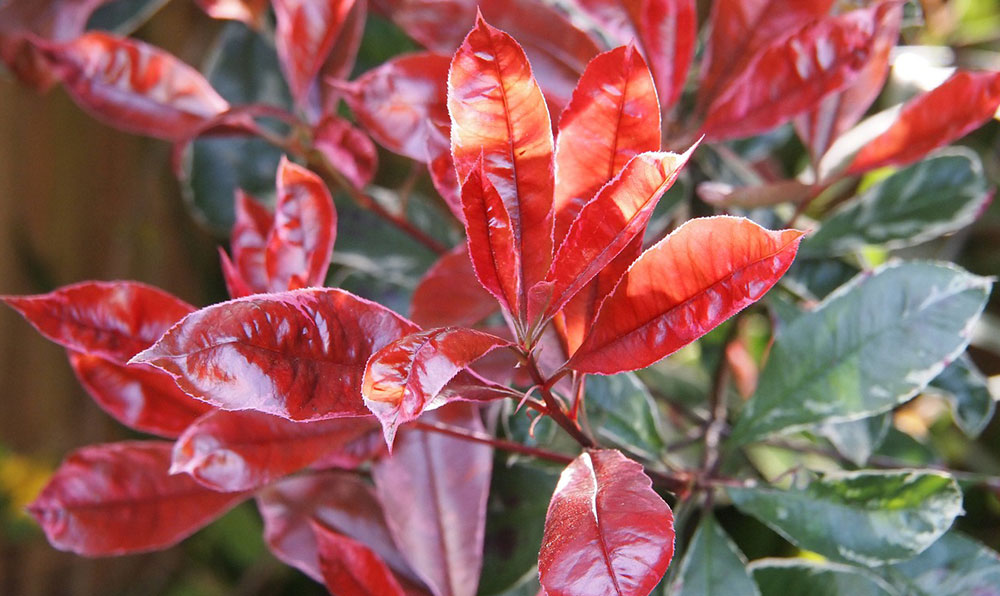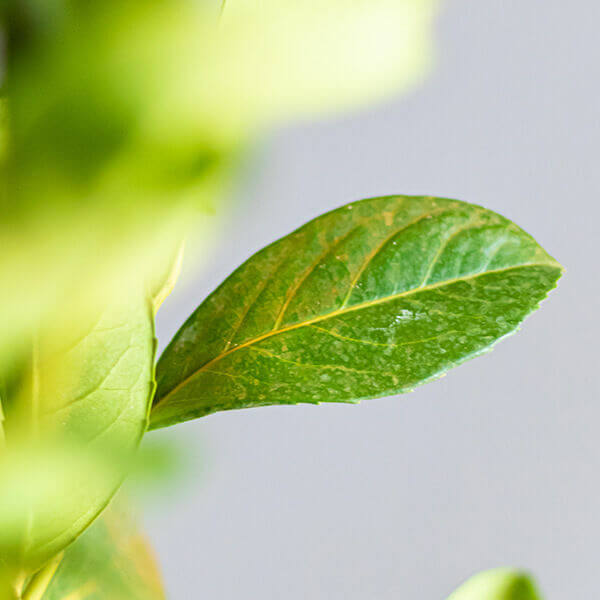Best Hedge Plants For Informal Hedges
Best Hedge Plants For Informal Hedges
Blog Article
Hedge Plants For Garden Edges
Improve your garden's allure with lush hedge ranges such as Yew (Taxus), Thuja, Laurel, Photinia, and Bamboo, commemorated for their structural integrity and ecological advantages.
Yew and Thuja offer evergreen protection and winter strength, while Laurel offers fast growth and broad, aromatic leaves.
Photinia adds seasonal appeal with its vibrant red foliage, and Bamboo lends a low-maintenance, tranquil atmosphere.
These hedges improve air quality, lower noise, and create tranquil, personal spaces.
Correct planting, spacing, and maintenance ensure energetic development and ecological harmony.
Check out how these lush ranges can elevate your garden's charm and wellness.
Key Takeaways
Change Your Garden With Lush Hedge Ranges
- Select Yew for its dense, evergreen growth and unrivaled durability.
- Select Laurel for its fast development and broad leaves, making sure fast privacy.
- Pick Photinia for its lively seasonal foliage, which turns a striking dark red.
- Utilize Bamboo for a low-maintenance, winter-hardy hedge with aesthetic appeal.
- Space plants 2-3 per meter and prune routinely for optimal growth and health.
Popular Hedge Plants
When transforming a garden with lush hedge ranges, it's necessary to think about popular hedge plants such as Yew, Thuja, Laurel, and Photinia due to their unique characteristics and benefits.
Yew (Taxus) is highly esteemed for its durability and thick, green growth, making it a prime choice for sustaining landscapes.
Thuja is kept in mind for its evergreen foliage and robust winter resilience.
Photinia includes seasonal vibrancy with red leaves that darken with time, developing vibrant visual appeal.
Laurel uses quick growth and fragrant, broad leaves, ideal for quick personal privacy.
Additionally, Bamboo is an exceptional option for atmosphere, providing a low-maintenance, winter-hardy choice that enhances the garden's aesthetic with its elegant, swaying canes.
These choices deal with a range of horticultural requirements and preferences.
Benefits of Garden Hedges
Garden hedges offer a wide range of benefits, making them an important addition to any landscape. These natural barriers are economical to implement and provide substantial wind protection, enhancing air blood circulation and contributing to noise decrease. The dense foliage of hedges like Thuja and Beech makes sure personal privacy by blocking visibility, developing a remote and serene environment.
Hedges likewise play an essential function in microclimate policy, supplying a steady environment that fosters plant development and minimizes temperature level fluctuations. Their detailed leaf structures filter contaminants, enhancing air quality and contributing to a much healthier garden ecosystem.
Furthermore, hedges master sound decrease, absorbing and deflecting sound waves to lower ambient noise levels. This double functionality of supplying both acoustic and visual privacy improves the total tranquility and visual appeal of any garden.
Planting and Upkeep Tips
For a successful hedge, precise preparation of the planting location is crucial. Guarantee the soil has correct pH and drainage to support strong root development.
Area the plants properly for the chosen species. Water the hedge often throughout its preliminary growth phase, changing as required with seasonal modifications.
Implement a methodical insect control and illness avoidance strategy, using organic or chemical treatments when needed. Frequently inspect for aphids, mites, and fungal infections.
Apply mulch to maintain moisture and suppress weeds. Seasonal pruning promotes dense development and air circulation, vital for plant health.
Following these standards will assist you cultivate a lively, well-maintained hedge that enhances the charm of your garden.
Spacing and Trimming Guidelines
Spacing and Trimming Guidelines
Appropriate spacing and trimming are important for cultivating healthy, aesthetically appealing hedges. Sufficient spacing guarantees each plant gets adequate nutrients, light, and air flow.
Follow these guidelines for ideal hedge maintenance:
- Spacing: Position hedge plants 2-3 plants per meter to encourage robust growth.
- Pruning Strategies: Routine pruning is necessary for keeping wanted hedge height and shape. Cut new growth in summer and cut down older wood throughout winter season.
- Seasonal Care: Adjust trimming techniques and schedules according to seasonal requirements to ensure plant health.
- Hedge Height: Frequently monitor and cut to keep the wanted hedge height and attain consistent visual appeals.
Abiding by these actions will ensure your hedge flourishes, enhancing both the appeal and performance of your garden.
Selecting the Right Hedge
Selecting the Right Hedge
Selecting the appropriate hedge includes assessing factors such as fully grown height, foliage density, and environmental resilience. Effective hedge plant selection needs comprehending each species' development qualities and site-specific adaptability.
For instance, Yew (Taxus) offers exceptional longevity and dense development, while Thuja is notable for its winter season resilience. In addition, considering upkeep requirements is essential; fast-growing types like Laurel or Privet need routine cutting, whereas low-maintenance options like Bamboo or Ivy may be more suitable for those seeking minimal upkeep.
Environmental elements such as soil type, light availability, and moisture conditions ought to also direct the selection process. This cautious technique makes sure the picked hedges will grow, providing both aesthetic and functional benefits to the garden landscape.
Shipment and Planting Guidance
To ensure your hedge plants thrive, they ought to be provided by specialized carriers and planted promptly upon arrival.
Follow these essential actions for effective planting:
- Soil Preparation: Enhance the soil with natural matter to enhance drainage and nutrient content.
- Planting Depth: Create a trench two times the width and equivalent to the depth of the root ball.
- Watering Techniques: Water thoroughly after planting, keeping the soil regularly damp but not filled.
- Mulching: Use a layer of mulch to keep wetness and reduce weeds.
Customer Assistance and Service
Provided the essential function of timely assistance in horticultural pursuits, our consumer support group is offered six days a week through telephone, e-mail, and social media to use professional advice and promptly deal with any concerns. Their dedication to fast reaction times ensures consumer complete satisfaction by fixing questions connected to plant health, optimum planting techniques, and upkeep schedules.

Reaction Time
-------------------
Within 24 hours
This thorough support group, reinforced by an outstanding 9.3/ 10 customer ranking, highlights our commitment to enhancing the gardening experience for every customer.
Regularly Asked Concerns
The Length Of Time Does It Consider Hedge Plants to Establish?
Hedge plants generally require one to three years to end up being totally developed, with the specific period differing by types and growing conditions.
Effective care during this crucial period is important for robust development. Constant watering, watchful weed control, and suitable fertilizer application are critical in promoting strong root advancement.
For instance, fast-growing types like Laurel may develop quicker, while slower-growing ranges such as Yew may take longer. Persistent maintenance speeds up the facility procedure, resulting in healthy and thick hedges.
What Are the Finest Hedge Plants for Personal Privacy?
The question of the best hedge plants for personal privacy includes assessing evergreen and deciduous options.
Evergreen hedges like Thuja, Laurel, and Cypress supply year-round protection, guaranteeing continuous personal privacy.
In contrast, deciduous hedges such as Beech offer seasonal privacy, shedding leaves in cooler months.
Key maintenance pointers for personal privacy hedges include regular cutting, fertilizing in spring, and appropriate spacing-- generally 2 to 3 plants per meter.
Additionally, constant watering and persistent weed removal are important for promoting healthy, dense development.
Can Hedge Plants Draw In Wildlife to My Garden?
Yes, hedge plants can attract wildlife to your garden by supplying important advantages like shelter, food, and nesting sites, thereby improving local biodiversity. For circumstances, yew, holly, and laurel are excellent for bring in birds, while ivy supports a variety of pests.
However, it's essential to keep in mind that there are some disadvantages, such as increased upkeep to manage insects and regular upkeep. Thoroughly selecting and preserving hedge ranges can help stabilize these downsides and benefits, ultimately promoting a vibrant and sustainable community in your garden.
Exist Any Flowering Hedge Plants Available?
Yes, there are flowering hedge plants offered that can boost the charm of your garden.
For instance, Elaeagnus, likewise known as Olive Willow, produces aromatic white flowers in the fall, including a touch of elegance.
Photinia, another popular choice, showcases vibrant red leaves that grow into a rich green, creating a vibrant visual impact throughout the seasons.
To ensure these plants flourish, it's vital to practice correct pruning techniques and seasonal maintenance, such as trimming new growth in the summertime and cutting down in the winter season.
These procedures will help keep the health and aesthetic appeal of your flowering hedges.
How Do I Prevent Insects in My Hedge Plants?
To avoid bugs in hedge plants, employ natural pest control techniques and keep correct hedge care. Present advantageous bugs like ladybugs, which take advantage of damaging insects, to produce a well balanced environment.
Frequently check your hedges for indications of problem and quickly remove any affected parts to prevent the spread. Make sure the health of your hedges by applying balanced fertilizers and providing adequate water.
Utilize mulching to maintain soil wetness and appropriate spacing to decrease plant stress and promote robust growth. These practices jointly assist in lessening insect issues and keeping a healthy hedge.
Conclusion
In essence, picking the ideal hedge ranges such as Yew, Thuja, and Laurel can transform any garden into a peaceful haven. These plants supply year-round plant, improve aesthetic appeal, and deal practical benefits like sound reduction and wind protection.
Correct planting methods, accurate spacing, constant watering, and seasonal trimming are vital for optimum growth.
Reputable delivery services and skilled client support guarantee a seamless experience from purchase to planting, making it easier than ever to elevate your outside space.
Garden hedges use a Additional reading plethora of benefits, making them an important addition to any landscape. These natural barriers are economical to implement and offer significant wind defense, enhancing air blood circulation and contributing to noise decrease. The dense foliage of hedges like Thuja and Beech guarantees personal privacy by obstructing presence, creating a secluded and tranquil environment.

Pruning Strategies: Routine pruning is vital for maintaining desired hedge height and shape. Cut new growth in summer season and cut back older wood during winter.
Report this page